5 Handstand Push-Up Alternatives (with Pictures!)
There’s no doubt about it; the handstand push-up is the quintessential calisthenic exercise, with its high intensity and capability of training the entire upper body in a single efficient movement.
If it were possible, every bodyweight athlete would be performing the handstand push-up. However, the difficulty and level of conditioning needed to do so is difficult to achieve - especially for novices who have yet to develop enough physical strength.
Fortunately, even for those who cannot perform the handstand push-up, there are still quite a number of potential alternatives that allow for a similar type of training stimulus to be achieved, with the closest being that of the pike push-up.
What is a Handstand Push-Up?
As a brief overview, the handstand push-up is an advanced calisthenic move that recruits multiple muscle groups across the upper body, making it a compound movement as well.
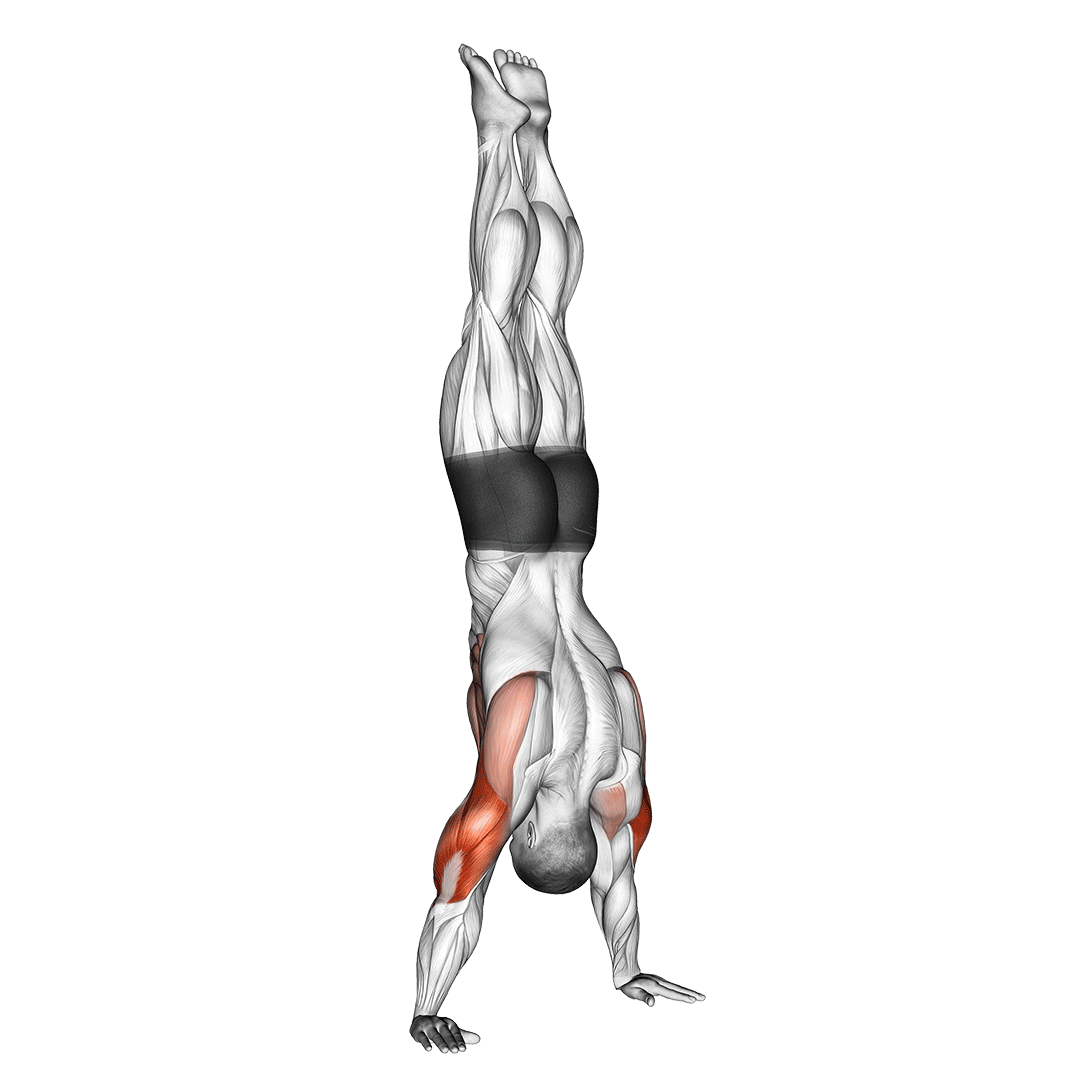
The handstand push-up is generally used in calisthenics training as a form of upper body primary training, with muscle groups like the pectorals, deltoids, core, biceps brachii and much of the back being recruited in a simultaneous manner.
Why Substitute the Handstand Push-Up?
The main and most common reason why the handstand push-up is switched out for an alternative is its intensity.
Not only does it require significant upper body strength and core stability, but also an innate understanding of bodyweight exercise mechanics and one’s own physiology.
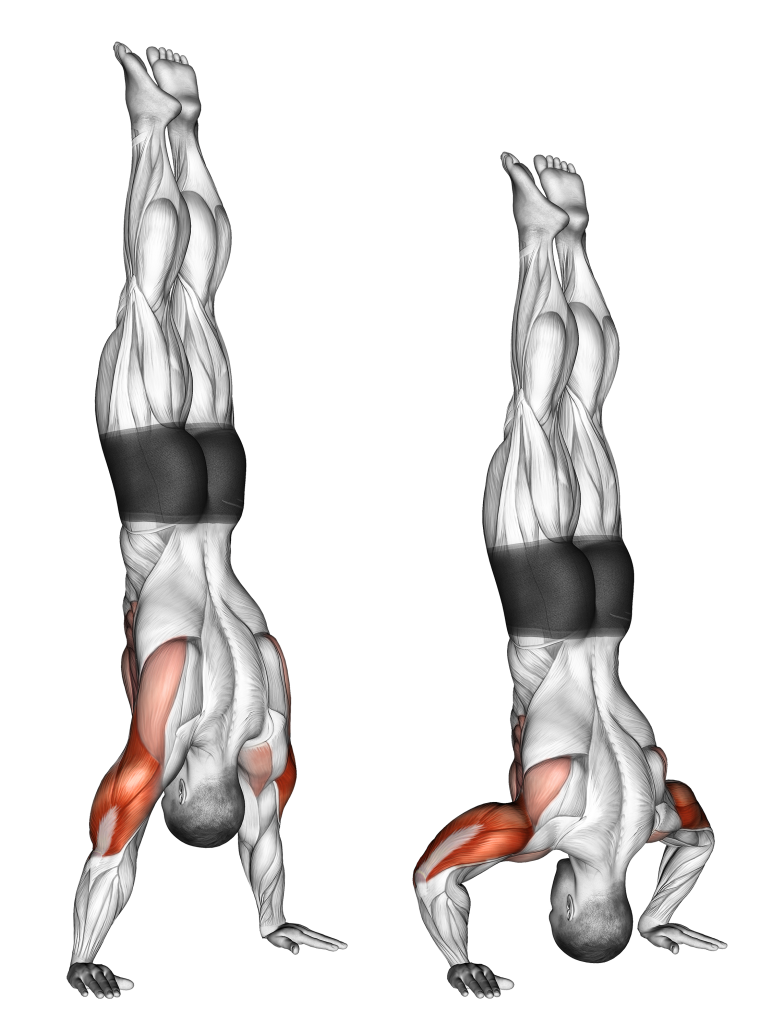
Not only do these factors require a significant amount of experience in resistance training, but it will also be impossible to maintain for exercisers of certain backgrounds.
Apart from the difficulty of the exercise, certain types of lifters may wish to instead make use of free weight or machine-based alternatives so as to develop a different sort of training stimulus.
Regardless of whether it is due to difficulty or the need for a different sort of training, there are a number of suitable alternatives available.
How to Pick the Right Handstand Push-Up Alternative
Picking the correct handstand push-up substitute requires that the lifter keep two factors in mind; the sort of training stimulus they need out of the exercise, as well as the compatibility of said substitute exercise with the lifter’s program and equipment.
This means picking an exercise that targets the deltoids, pectorals and arms at a high level of intensity, as well as one with a wide dynamic range of motion involving some level of core stabilization.
In addition, depending on the exerciser’s needs, the exercise may need to also be a bodyweight movement.
Handstand Push-up Alternatives
1. Pike Push-Ups
A calisthenic exercise that features much the same muscle group recruitment pattern as the handstand push-up, the pike push-up is less an alternative and more a scaled progression performed prior to moving onto handstand push-ups.
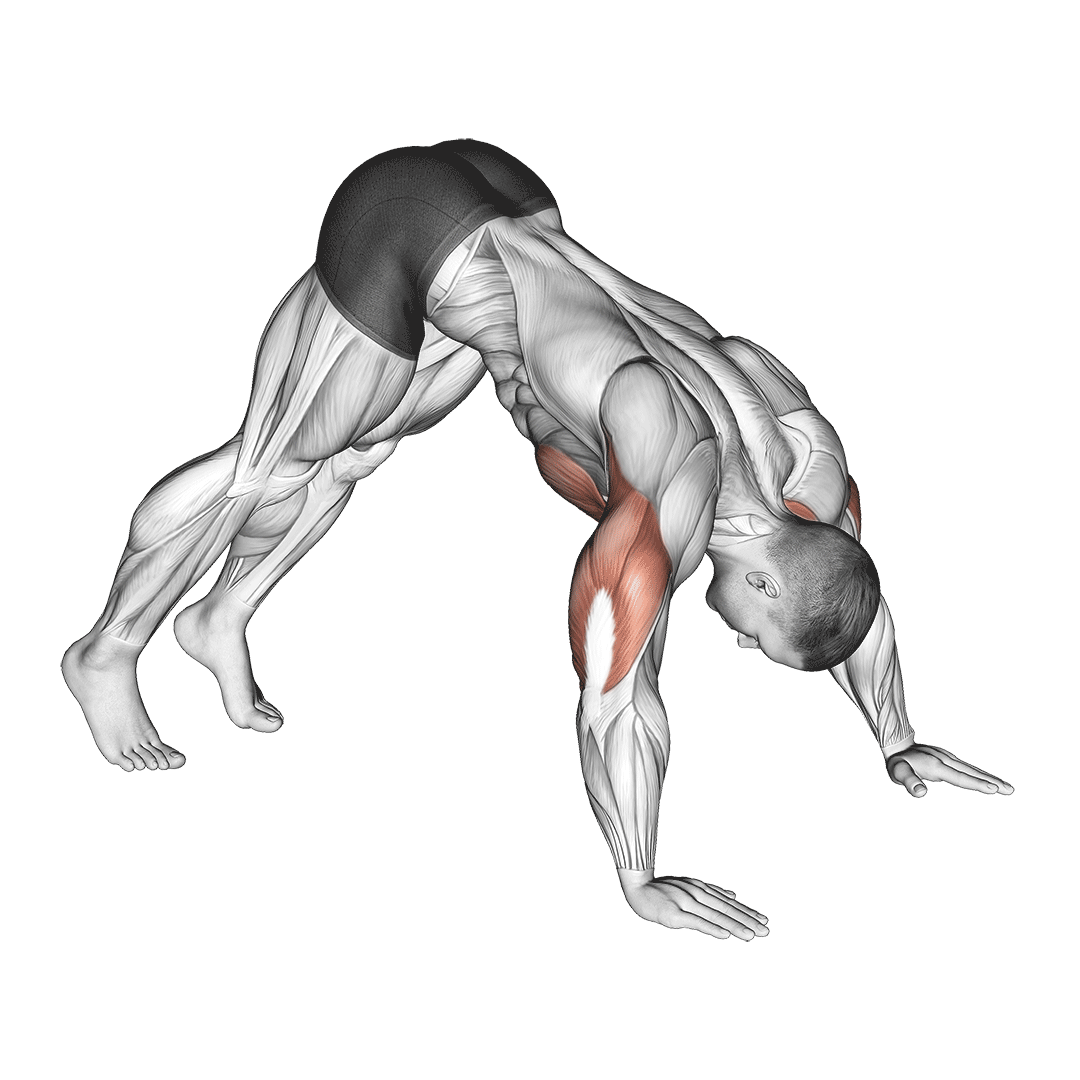
Much like the handstand push-up, pike push-ups will focus primarily on the pectorals and deltoids, but will also require the triceps and biceps to be recruited in a lesser capacity.
Unfortunately, due to the position of the lower body, pike push-ups will not significantly recruit the core musculature.
Benefits as a Handstand Push-Up Alternative
The main benefit of performing pike push-ups in place of handstand push-ups is its greater capacity of volume and relatively lower difficulty per repetition.
Not only is this advantageous for less experienced calisthenic athletes, but it will also allow for less strain to be placed on the various tissues of the body - not to mention the lower amount of fatigue accumulated when incorporating the exercise into a workout session.
Equipment Needed to Pike Push Up
Pike push-ups are a body weight exercise and as such do not require any equipment whatsoever.
How-to:
To perform a repetition of the pike push-up, the exerciser will lie on the floor on their hands and knees, raising their hips into the air so as to form a triangle with their body.
From this triangle pose, the lifter will perform a push-up by lowering themselves downwards and forwards, stopping once their feet are at near tiptoe extension.
From this extended position, they will then push through the palms and reverse the movement, rolling their body backwards until they are once more in the starting pose, thereby completing the repetition.
2. Overhead Press
A classic free weight exercise known for building excellent mass and strength in the deltoid muscles, the overhead press is a suitable alternative to the handstand push-up for exercisers that wish to further develop their upper body strength and power.
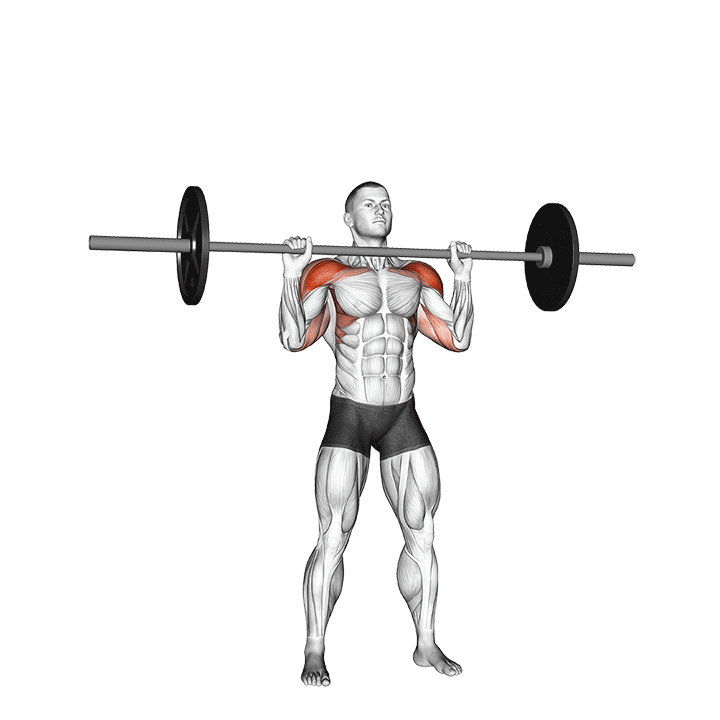
Though the overhead press will target fewer muscle groups than a handstand push-up would, it makes up for this deficit by being far more convenient to perform, as well as recruiting the deltoids, pectoral muscles and triceps to a more effective degree.
Benefits as a Handstand Push-Up Alternative
Because of the fact that the handstand push-up utilizes the lifter’s own body weight for resistance, the overhead press’s usage of free weight equipment allows for far less limited variability in terms of weight lifted.
Not only will this ease the difficulty of programming the exercise, but it can also allow for more advanced exercisers to keep the intensity of their training consistent without performing excessive volume.
Furthermore, the overhead press is excellent for building the muscles of the deltoids and triceps - surpassing the handstand push-up by simple specificity of training stimulus alone.
Equipment Needed to Overhead Press
The overhead press is traditionally performed with a straight olympic barbell and set of weight plates, though it may also be performed with dumbbells, kettlebells or any other sort of free weight equipment.
How-to:
To perform a repetition of the overhead press, the lifter will unrack the loaded barbell and step into the free space of the rack, resting the bar around their clavicles.
Ensuring their core is tight and that no swinging is occurring, the lifter will then press the bar upwards in a straight line, stopping once their arms are at full extension.
3. Machine Shoulder Press
For a lengthier time under tension and greater specificity, exercisers may wish to switch from the handstand push-up to a machine-based exercise.
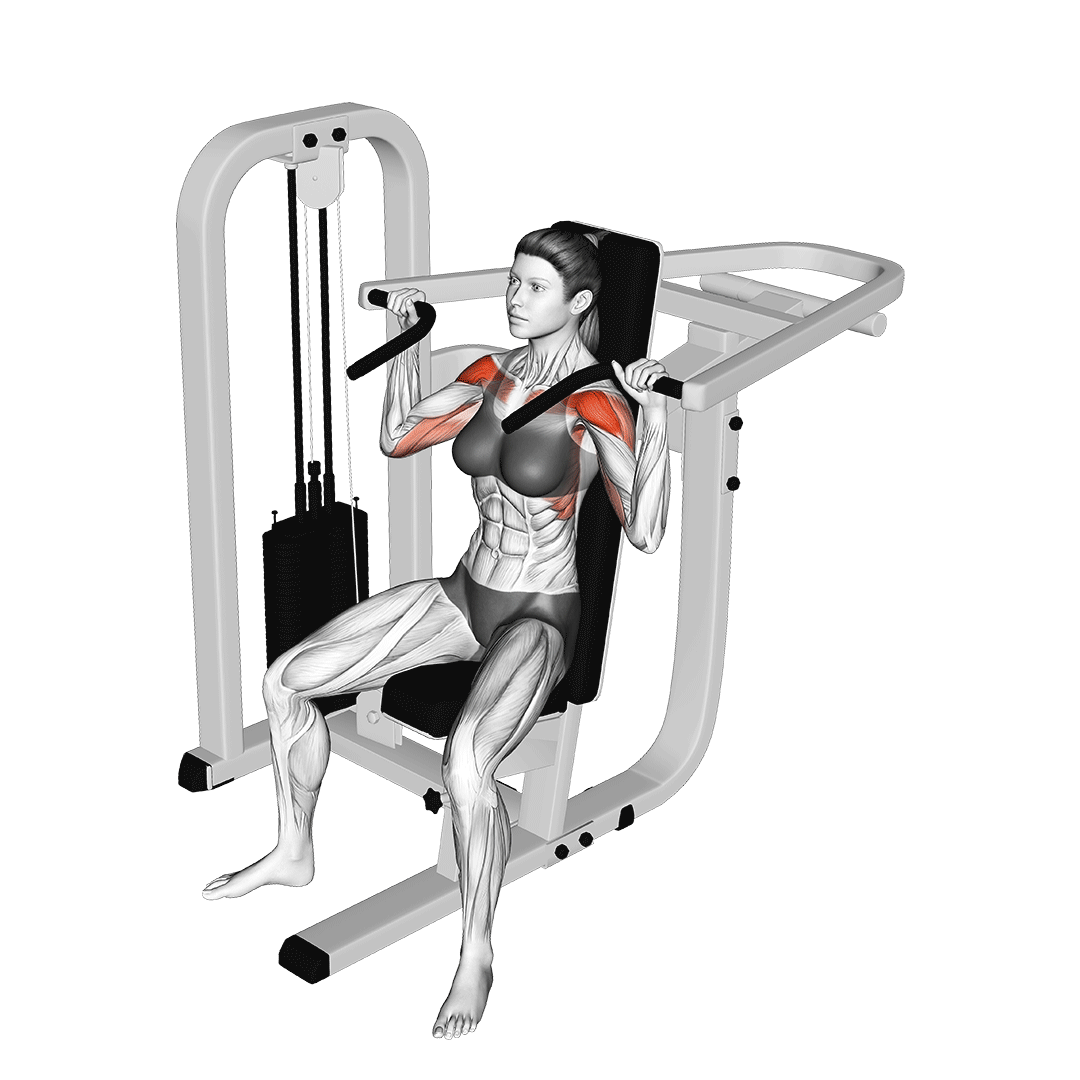
Specifically, the shoulder press machine is arguably the best substitute among machine-based movements, as it features a similar set of mechanics and muscular recruitment to the handstand push-up.
Much like other shoulder press variations, the machine shoulder press is a single-joint compound exercise meant to target the muscles of the deltoids and triceps at a high level of resistance, though the fact that it is a machine-based exercise equates to a lesser involvement of stabilizer muscle groups than in free weight shoulder press variations.
Benefits as a Handstand Push-Up Alternative
Apart from the usual benefits of a machine-based exercise, the machine shoulder press is also excellent for increasing focus on the muscles of the deltoids and triceps - two major muscle groups that are otherwise trained by handstand push-ups, though not to as specific a degree.
This can allow for greater upper body mass and strength to be developed without fatiguing other nearby muscle groups, as well as make it easier to fit into a workout plan, unlike handstand push-ups which may take up far more fatigue and muscular exertion than necessary.
Equipment Needed to Machine Shoulder Press
The machine shoulder press will require a specially made resistance machine specifically for shoulder presses.
Other machines that are repurposed for performing a shoulder press may not suffice, as they feature different angles of resistance and mechanics.
How-to:
To perform a machine shoulder press repetition, the lifter will seat themselves facing the handles of the machine, placing the hands a comfortable (but wider than shoulder-width) distance along the handles.
Bracing the core and ensuring that the buttocks remain in-contact with the seat, the lifter will then push the handles upwards by extending their elbows overhead and exerting force through the shoulders.
Once the arms have reached a state of full or near-full extension, the lifter will slowly reverse the motion so as to complete the repetition.
4. Wall-Supported Handstand Push-Ups
For calisthenic athletes who wish to perform an easier variation of the standard handstand push-up, performing the exercise with the support of a wall or similarly sturdy surface can help reduce intensity and allow for more volume to be performed.
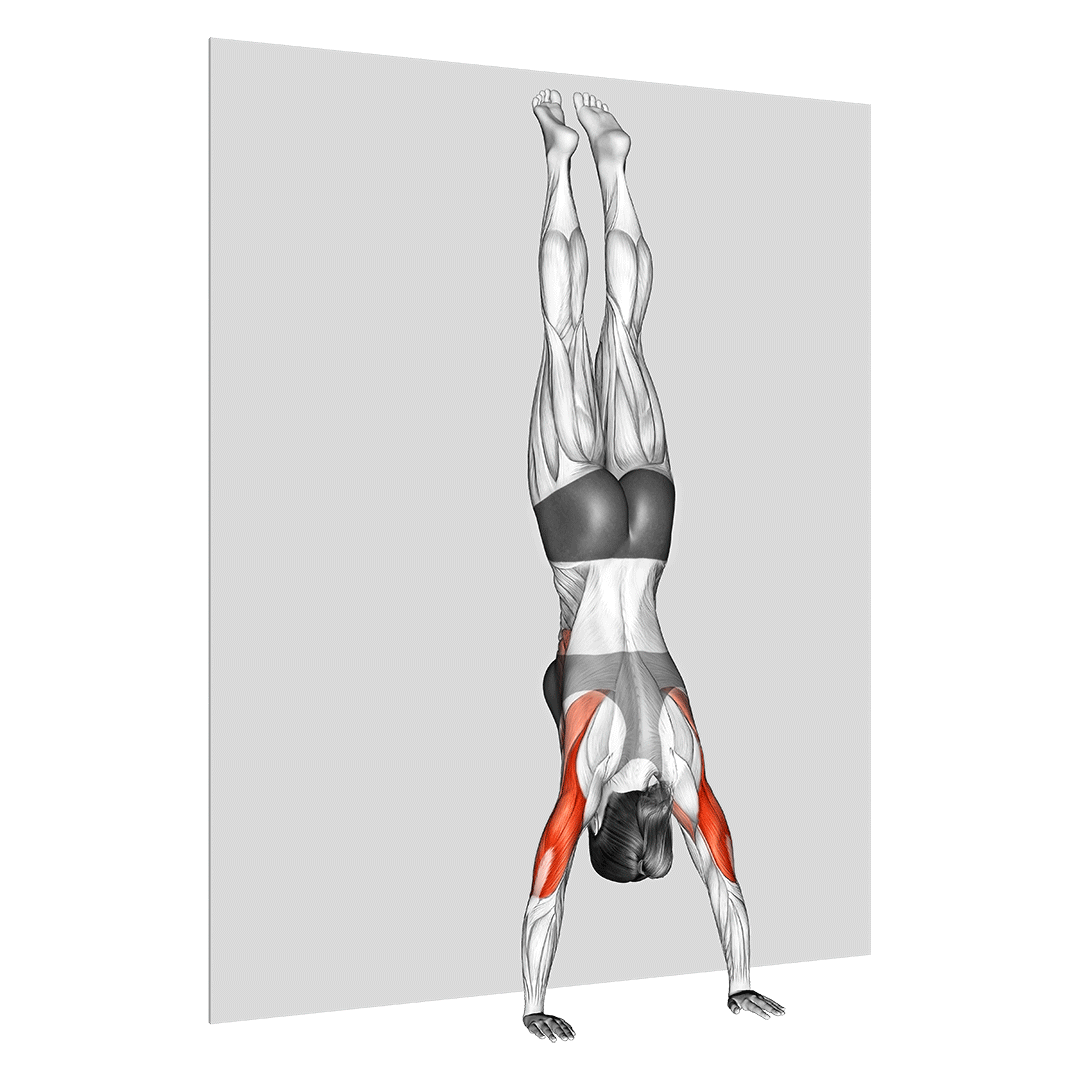
Apart from less of the exerciser’s bodyweight being placed on their upper body, wall-supported handstand push-ups are otherwise mechanically identical to their unsupported counterparts - meaning that they are a multi-joint compound movement primarily targeting the pectoral muscles, arms, and shoulders to great intensity.
Benefits as a Handstand Push-Up Alternative
The main benefit of performing handstand push-ups with the support of a wall is the decrease in intensity and difficulty of each repetition.
Not only does this allow less-experienced calisthenic athletes to perform this otherwise difficult exercise, but it can also allow for more flexibility in programming and more volume to be achieved per set - of which is often an issue with the handstand push-up.
Furthermore, performing the exercise leaning against a wall allows the exerciser to risk injury to a far lesser extent, reducing the amount of torque and force placed on their shoulders as they rotate through their range of motion, as well as reducing the risk of the exerciser losing their balance in a handstand position.
Equipment Needed for Wall-Supported Handstand Push-ups
Much like the conventional variation, wall-supported handstand pushups require no equipment whatsoever, only a wall or similarly tall and sturdy object to lean against.
How-to:
Performing the wall-supported handstand push-up is much the same as its more intense counterpart.
The exerciser will enter a handstand position with their torso facing the wall, leaning their feet against it for the greatest amount of stability, before bending at the elbows and lowering their head and chest towards the ground.
Once nearly touching the floor, they will then push through the palms and extend their elbows once more, returning to the leaning handstand position and thereby completing the repetition.
5. Lateral Raises
For lifters wishing to isolate their deltoids, there are few better substitutes to the handstand push-up than lateral raises.
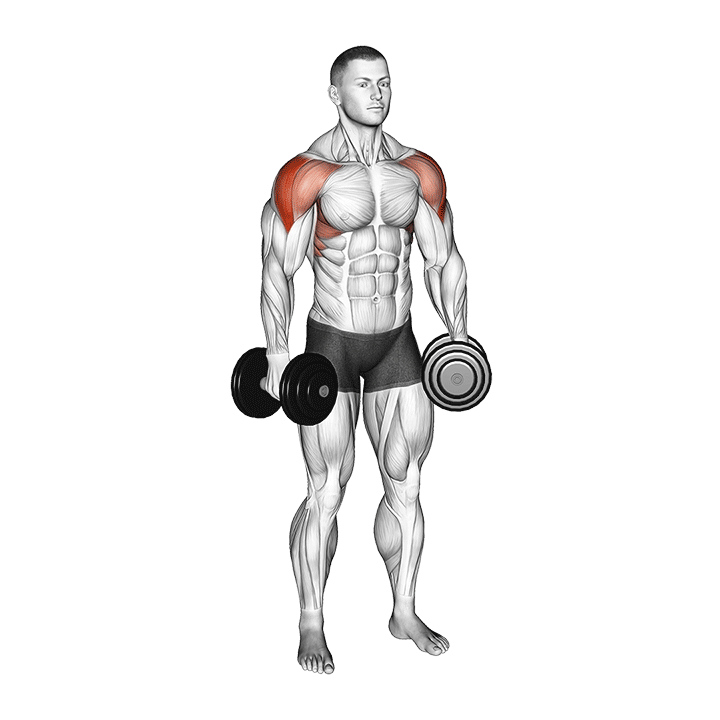
Though it is often the case that exercisers are performing handstand push-ups because they do not have access to resistance training equipment, lateral raises require only a small amount of weight, and can even be performed with a single weight plate or other heavy object if needed.
They are a single joint isolation exercise meant to target all three heads of the deltoids muscle group, and are otherwise performed as accessory work, rather than as a primary compound movement like handstand push-ups are.
Benefits as a Handstand Push-Up Alternative
Apart from being an isolation exercise, lateral raises allow the exerciser to better target their posterior deltoid head - of which is not worked to the same extent as the medial and anterior sections of the deltoids during handstand push-ups.
On top of this, lateral raises allow for a free weight training stimulus to be achieved, even with the most minimal equipment possible - making it arguably useful for calisthenic exercisers that wish to begin branching out to free weight training as well.
Equipment Needed for Lateral Raises
Lateral raises may be performed with all sorts of light-weight equipment, including kettlebells, plates, dumbbells and even resistance bands.
How-to:
To perform a repetition of the lateral raise, the lifter will stand upright with the weights gripped at their sides.
Keeping the elbows slightly bent, they will contract the deltoid muscles and raise the weights upwards and outwards, as if forming a letter “T” with their upper body.
Once raising the weights to approximately shoulder-elevation, the lifter will slowly reverse the motion, thereby completing the repetition once the weights have returned to their original position at the lifter’s sides.
Frequently Asked Questions (FAQ)
What Can I Do Instead of a Handstand?
If handstands don’t quite fit your training needs, other bodyweight variations like wall-supported handstands or pike push-ups may suffice.
If seeking a similar level of intensity and training stimulus, you may wish to instead perform weighted exercises like the overhead press or clean and jerk.
Are Handstand Push-Ups Necessary?
There is no doubt that handstand push-ups are among the most effective bodyweight exercises for building upper body mass and strength. However, to say they are necessary is not quite true.
Much of the development one would find with handstand push-ups can be recreated with other bodyweight exercises like the push-up, plank and reverse row - not even counting the various non-bodyweight alternatives to handstand push-ups.
Who Should NOT Do Handstands?
Handstands and handstand push-ups are otherwise unsuitable for lifters with a history of wrist, elbow, collarbone or shoulder injuries, as well as exercisers without the prerequisite coordination and upper body strength to perform the movements safely.
In Conclusion
Whether you’re looking for a handstand push-up alternative because they’re too difficult or because you wish for a different sort of training stimulus; these alternative exercises are likely your best bet, so try them out and see if they work for you.
Remember to program any substitute exercise appropriately, and that if you are unsure of how to perform a certain exercise, it is best to begin at a low intensity.
References
1. Schwarznegger, Arnold. Dobbins, Bill. (Nov 5, 1999) “The New Encyclopedia of Modern Bodybuilding : The Bible of Bodybuilding, Fully Updated and Revised EBook Edition” Simon and Schuster Publishing ISBN-10: 3200328452
